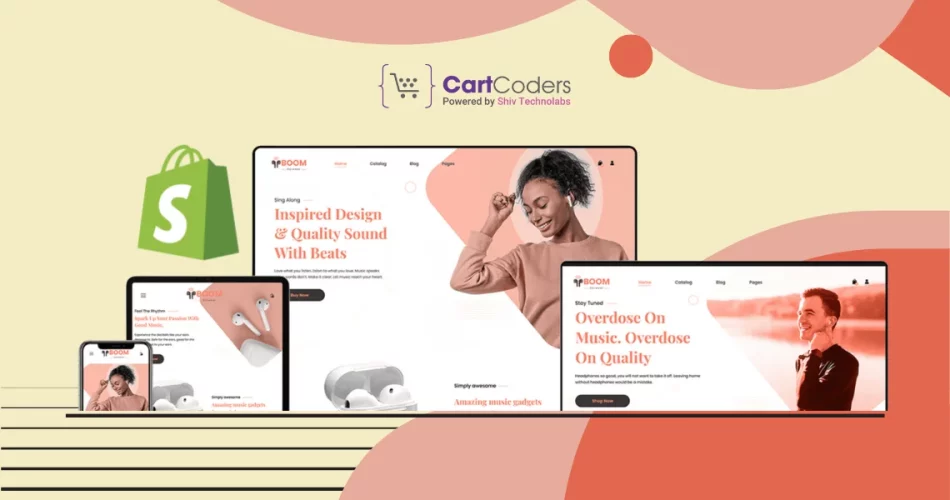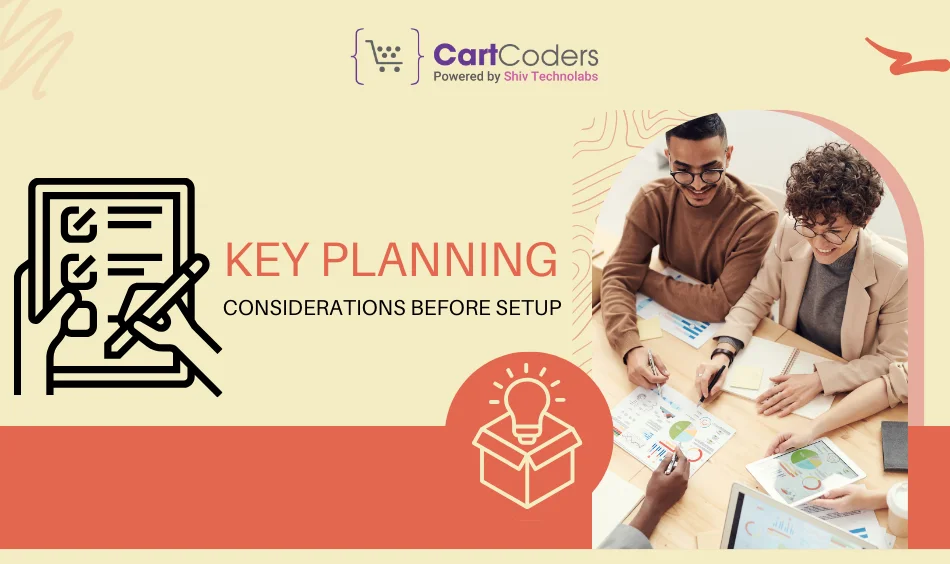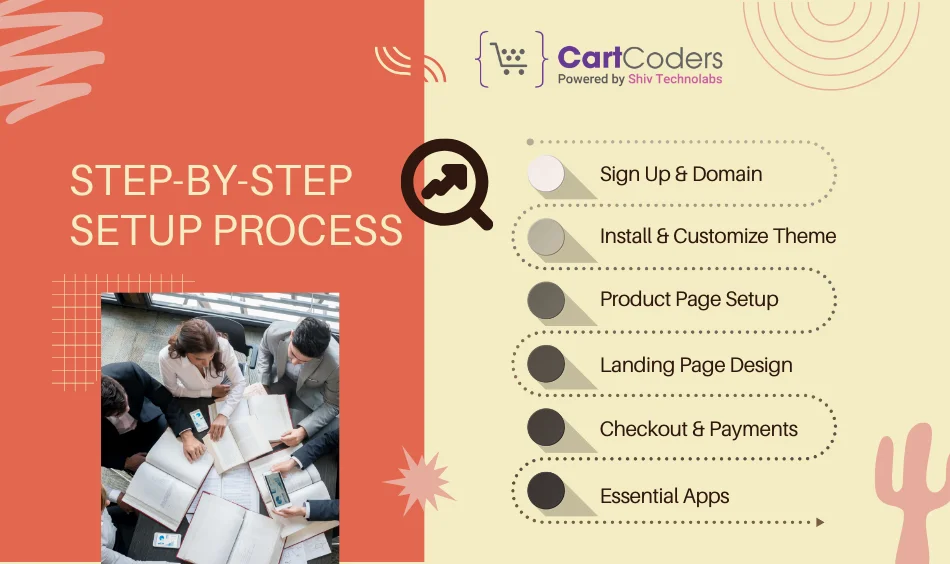Custom Engagement Solutions
Unlock tailored solutions with a free, no-obligation strategy session.
Expert Developers & Engineers on Demand
Scale Your Team with Skilled IT Professionals
Expert Guidance for Digital Transformation

You don’t need many items to run a successful one product Shopify store in 2025. Selling one product can simplify things. It simplifies setup, ads, testing, and your overall process. More than half of the top DTC brands are now focusing on single-product stores.
Mobile shopping is growing rapidly, with mobile commerce projected to surpass $2.5 trillion by 2025. Landing pages built to convert are working better than ever. And creators are helping spread product awareness. When these pieces come together, the path to sales becomes quicker.
Accuracy is essential in all processes, including what you sell and how you sell it. If you want to create a Shopify single product store quickly and easily, here’s a guide to help you get started.
A single product eCommerce store keeps things simple. There is no confusion for the customer or you. That’s one reason they perform better than multi-product stores.
When your store has one product, you can focus fully on explaining what it does. You don’t need to divide attention. You can clearly explain how it works and who it helps.
You won’t waste time making many ads. One product means fewer ad sets to build. You can test quickly, compare results, and improve without incurring significant costs.
You can see what’s working faster. Whether it’s price, images, or landing page layout, every change you test is focused on one item. That makes tracking performance simple.

You need a plan before you open a Shopify account. A high-quality foundation will save you time and money in future.
Research the market and the interest of the buyers with the help of tools such as Google Trends or the TikTok Creative Center. Read reviews on Amazon. Choose a product with high demand, good profit margin (about 3x), and a clear use case.
Decide on the fulfillment model:
Consider who will buy your product and what change it will bring. Write a story around that. Use it to build your landing page, from top to bottom.
Make a PDF guide that outlines what users can expect. Offer early deals and ask for an email to access them. This helps you grow your email list before launch.
Select a theme that puts your product in the spotlight. It is necessary to have a quick loading speed, be pleasing to view on mobile, and achieve a very high conversion rate.
Best for straightforward product storytelling. Works with GemPages and supports clean call-to-action (CTA) areas.
Premium theme with timers, sticky CTAs, and popups. Good choice for launches with a countdown.
Creative layout ideal for bold brands or niche markets. Appeals to younger shoppers.
A basic Shopify theme. Clean design, fast performance. Great for testing or first-time stores.

Once you have completed all the planning, you should begin working on it as soon as possible. Follow these steps for Shopify Store Setup.
Select a Shopify plan that best suits your current needs. The Basic plan works fine to start. Buy a .com domain from Namecheap or Google Domains and connect it.
Upload your selected theme. Open “Customize.” Use drag-and-drop tools to place your sections. Keep attention on your product and what it offers.
Use a layout that guides the user clearly. Your page should include:
Add payment options like Shop Pay, PayPal, and Google Pay. Set up tax settings for your location. Make delivery rules. If you serve cash-based markets, enable COD.
Once live, keep working on better conversions.
Add timers, stock alerts, or limited-time offers. These push people to buy fast. Don’t overuse them.
Display trust badges, genuine reviews, secure checkout, and money-back guarantees. These help users feel safe.
Don’t add too many form fields. Auto-fill details when possible. Make the process short and clear.
Run small tests on things like CTA color, title text, or product bundles. Track what leads to more sales.
Before bringing traffic, test everything as if you’re the customer.
Ensure you can add items to your cart, complete checkout, and receive a confirmation email.
Your store should display correctly on all devices. This includes phones, tablets, and laptops.
Run small ad campaigns on TikTok or Facebook. Monitor key metrics such as click-through rate and bounce rate.
Checklist:
After testing, bring in buyers using proven marketing tactics.
Use a strong copy that identifies a problem and demonstrates how your product addresses it. A/B test images and headlines before you launch a single product store.
Message small content creators on social media. Send them your product and offer a small payment per sale. Their honest reviews outperform polished brand videos.
Use tools like Privy or ReConvert. You can show exit pop-ups, offer upsells after checkout, or display deals on the thank-you page.
Set up retargeting:
See how these stores succeed with one product:
The homepage uses short animations to explain the product. There’s one strong CTA. Customers can post content.
The store features a clear image that showcases the product in action, including real video reviews and a sticky CTA on mobile.
They offer a subscription for a single product. The design focuses on culture and story to connect with buyers.
This store features soft images, calming colors, and showcases how their tea fits into a serene lifestyle.
Key Design Lessons:
Avoid these common mistakes that can impact your performance.
Only include what is needed. Too many apps or sections will slow your site.
Most users visit on mobile. Ensure the site functions optimally on all screen sizes.
If users can’t understand your product in 10 seconds, they will leave. Make the message obvious.
Have one primary CTA. Use it in different places, but ensure the goal remains the same.
Always test your store on different devices and browsers. This ensures a smooth user experience.
Want help setting up your one-product store?
CartCoders builds and launches one-product stores that convert. We handle the full setup, so you can focus on growing your brand.
We help with:
Want to start selling fast? Let us build your store and set it up right.
Running a one product dropshipping store is a simple and effective approach. Focus on one offer, create one sales flow, and target a single type of buyer. You don’t need a big budget to get started. You just need clear steps and smart choices.
If you follow everything in this guide, you will launch with confidence. You will avoid common issues and get to your first sales faster. And if you want expert help, CartCoders can take care of it all.
Projects delivered in 15+ industries.
95% retention rate, building lasting partnerships.
Serving clients across 25+ countries.
60+ pros | 10+ years of experience.